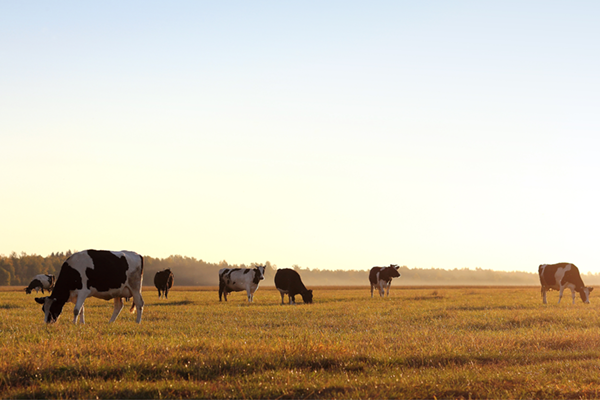Dr Gareth Kelly, technical service manager of Boehringer Ingelheim, draws a parallel between athletes competing at the Olympics when reflecting on the performance of Eprinex® Pour-On for Cattle, against its competitors.

“I always enjoy watching the Olympics" he said.
"The pinnacle event for me is the 100m race. As each runner is introduced to the crowd, you get to see their strength and a glimpse of their character.
“If there was an such an event to determine the best pour-on drench, judging criteria to decide the winner would include potency (strength), speed of kill, and ability to cope with external challenges.
“The question remains, who would be able handle the pressure and be the quickest to win the gold medal?
“The clear winner who would outperform the competition and secure the gold medal in this race would be Eprinex® Pour-On for Cattle.” he declared.
He went on to explain how Eprinex® performs in each of these critical areas, demonstrating why it stands as the champion among pour-on drenches.
Potency
The active ingredient in Eprinex, eprinomectin, was the result of a targeted program of discovery and development. The objective of the research program was to find a molecule and a carrier that possessed all the favorable characteristics of the pioneer compound ivermectin. It should also possess greater potency, particularly against one of the dose-limiting nematode genera, Cooperia, and a residue profile to have nil meat and milk withhold periods.
Australian research has identified macrocyclic lactone (3-ML) resistance in Cooperia on farming properties. In these instances, Eprinex maintained a higher efficacy compared to moxidectin and doramectin.1 While combination drenches are an important tool to combat resistant Cooperia, the result demonstrates the potency advantage of Eprinex.
Strategic parasite control programs incorporating anthelmintics are designed to limit pasture contamination with worm eggs. Following administration at the recommended dosage, Eprinex provides persistent efficacy to control reinfection, with a range of parasitic nematodes, for up to 28 days when cattle graze contaminated pastures.
What differentiates Eprinex from most other treatments is because of its high potency, it has persistent activity against more species of parasitic nematodes, including Cooperia.
Speed
Less pasture contamination also occurs when a treatment works quicker. Studies have shown that Eprinex works fast and reaches peak blood concentrations after two days2 to stop egg production quickly.
A study showed that three days after treatment, 88 per cent (pc) of cattle treated with Eprinex had a zero worm egg count, compared to 48 pc and 44 pc in cattle treated with doramectin or moxidectinn.3
Challenge
Eprinex is also able to perform under extreme variable conditions. In series of controlled experiments, the performance of Eprinex was tested under a range of rainfall conditions and in cattle with varying hair length.4
Simulated rainfall of 25mm was applied over an hour, either one hour before treatment or one, three, or six hours after treatment. No difference in efficacy was noted, compared to treated animals not subjected to rainfall. In addition, no difference was recorded in cattle with a hair length of one cm or up to six cm long.
No matter the season, wet or dry, Eprinex has proven to be a winner.
The real winners are the farmers who choose Eprinex. Controlling parasites with Eprinex has been shown to increase liveweight gain, milk yield and fertility.5 This successful trifecta of outcomes helps ensure that drenching cattle remains an investment to achieve better returns on the farm.
Eprinex has been shown to be a winner in the scientific press and proven to perform on-farm where it’s needed. For your next parasite control treatment, choose the gold medal option. Trust what works!
This article was written by Dr Gareth Kelly at Boehringer Ingelheim for Seasons magazine.
Please note: this article contains information of a general nature, and does not take into account your personal objectives, situation or needs. Before acting on any information, you should consider the appropriateness of the information provided, and seek advice on whether it is fit for your circumstances.
References
1 Wonders, N. What does anthelmintic resistance mean for worm treatment in cattle? Proceedings of the AVA Cattle Conference. 2016: Alice Springs
2 Alvinerie, M. et al. (1999) Pharmacokinetics of eprinomectin in plasma and milk following topical administration to lactating dairy cattle. Research in Veterinary Science 67, 229–232
3 Paul, A. et al. Proceedings of the American Association of Veterinary Parasitologists. 45th Annual Meeting, Salt Lake City, USA, 2000, Abstr: 82
4 Gogolewski, R. P., Allerton, G. R., Pitt, S. R., Thompson, D. R., Langholff, W. K., Hair, J. A., ... & Eagleson, J. S. (1997). Effect of simulated rain, coat length and exposure to natural climatic conditions on the efficacy of a topical formulation of eprinomectin against endoparasites of cattle. Veterinary parasitology, 69(1-2), 95-102.
5Forbes, A. B., Huckle, C. A., & Gibb, M. J. (2004). Impact of eprinomectin on grazing behaviour and performance in dairy cattle with sub-clinical gastrointestinal nematode infections under continuous stocking management. Veterinary parasitology, 125(3-4), 353-364.
